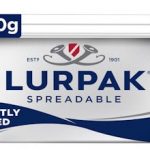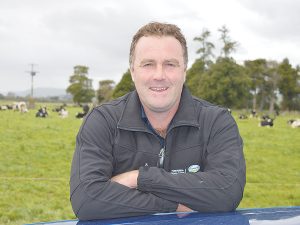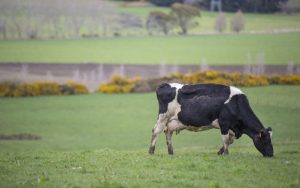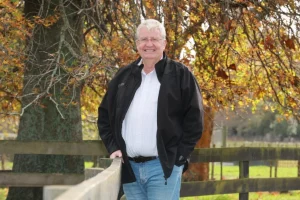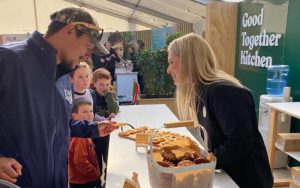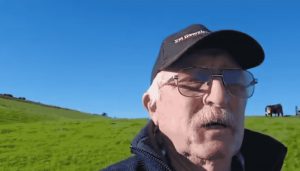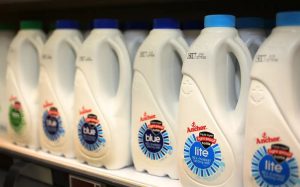
Cows creating compost in a former cheese factory and heifers and sheep feasting on swedes were stops on a tour of winter grazing systems in Southland.
About 20 people went on the tour hosted by the Three Rivers Catchment Group, in conjunction with Thriving Southland, to show four wintering systems.
The first stop was Niels Modde and Jodie Templeman’s dairy farm in Tuturau, between Mataura and Wyndham.
The couple bought the property to launch their business 4 The Girls Dairies in 2018.
Many of the buildings on the 108-hectare self-contained dairy farm had been repurposed to winter their 200 cows.
A former cheese factory on the property was now a composting barn to house cows from early May, Mr Modde said.
“Five years ago there were not many composting barns around so we had to learn a lot from Dr Google.”
A tunnel house once used to grow hydroponic lettuce and strawberries was now used to winter calves.
Cows were milked all of the year.
A milking cow needed about nine square metres in a composting barn.
All silage was bought in and calving was split — 75% in spring and the rest in autumn.
The sawdust in the barn needed to be aerated up to twice a day and a new layer of sawdust introduced about every fortnight.
Accessing sawdust might become a challenge if more farmers built composting barns, he said,
Oat husks from Harraways & Sons in Dunedin were also used in their composting barn.
The husks cost about the same as sawdust.
Oat husks absorbed less moisture than sawdust but were better at increasing the heat in the compost, he said.
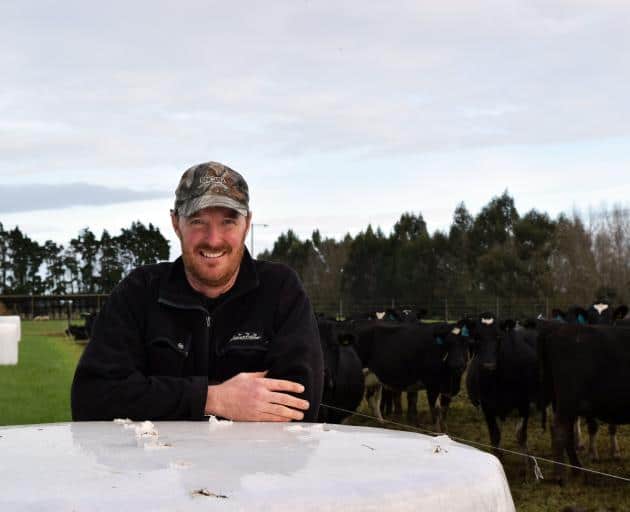
For the second stop, dairy farmer Steven Clarke explained his grass and baleage wintering system on a 20ha block he leases at Brydone, between Mataura and Edendale.
“We can’t afford barns, so this is our best option.”
The 20ha block could winter 200 cows and the herd did well on it, he said.
“They really like it, they’ve got plenty of room and they’re full all the time.”
An Environment Southland consent was required to winter on the block.
The consent did not allow a crop to be planted to winter the cows.
Cows were only allowed to be fed silage or baleage under the consent.
The consent allowed him to have 200 cows on the block from July 26 until the middle of August.

The third stop was a block at Mimihau, which Matt McLaren and his family lease to grow a winter crop of precision sown swedes for dairy heifers to winter on.
A mosaic virus was identified in the swede crop about six weeks before the tour on June 13.
The virus damaged the leaf and lowered the yield.
“It had an insecticide and fungicide but they reckon the virus is spread by the wee green aphid quite early on.”
The swede crop was sown in mid November.
About 120 dairy heifers, split in two mobs, were on the crop for about 100 days.
Wintering the cattle on the crop allowed them to winter most of their sheep on grass.
Typically, ewes carrying a single lamb were put on a winter crop after scanning.
As they were pre-lamb shearing this year, they had two-tooth ewes on another crop of swedes in Tuturau.
Creating a winter grazing plan for the paddock on the tour was relatively simple because any sediment run-off was not likely to enter a waterway.
“It’s another whole paddock away before we get to an open water way.”
Other winter crops on the farm included kale and fodder beet.
Having the fodder beet crop available allowed him to avoid the brassica crops going to seed and flowering.
“It’s a tool for that last part of winter.”
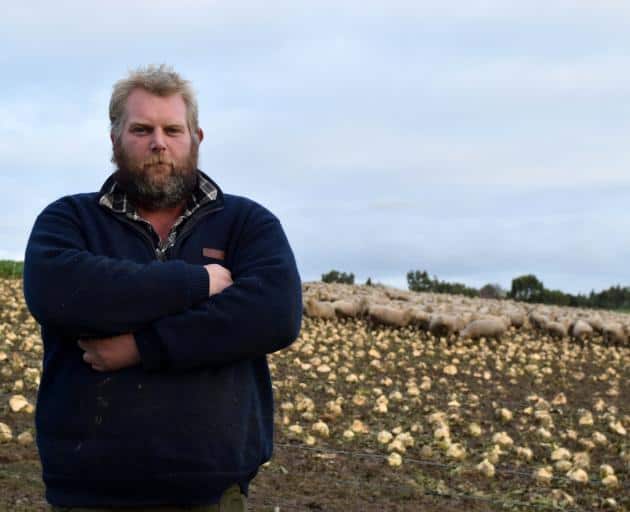
The final stop was a mob of 720 ewes grazing on a winter crop of about 20ha of swedes on Ben Dooley’s about 250ha sheep and beef farm in Mimihau.
More than 90% of the stock were sheep.
The rest were about 50 dairy beef steers and heifers, which were also wintered on farm.
“We are very heavily reliant on crop for our winter grazing.”
Winter crops had been part of the system for nearly 12 years.
Swedes were his winter crop of choice as they were safer for stock to eat than other crops, easy to manage and cost-effective.
“Nothing is as cheap as swedes to grow.”
The mob of ewes were also given about 700kg of dry matter in baleage every four days.
His family once ran an all-grass winter system for about 35 years but he would never use one again.
“We’ve seen the negative effects of that and I don’t want to ever hear about it again.”
An all-grass winter system allowed very little room for regrassing on his farm, he said.
“You struggle to find the time of the year where you have the availability to take a paddock out — you need those paddocks in the whole time.”
Over time the condition of the pasture in an all-grass wintering system got worse.
“You’ve got to take a hit on your lambs at some point to be able to do some regrassing.”
An all-grass system would be workable for between 10 to 15 years but long-term, a system needed to have some form of crop rotation.
“Be it a grazing crop or moving to a cereal crop or something, I don’t know.”
Breaks in his swede crop were moved so sheep grazed uphill, to avoid a bog forming at the bottom of the paddock by the end of winter, he said.
“Grazing downhill gets a big no from us.”
Most of his ewes were put on the swede crop early but some remained on grass.
Their was a split lambing, about 13% of the ewes were due on August 23 and the rest were due on September 12.
After scanning, two-tooths would be on the swede crop for a fortnight and then put on grass, ewes carrying triplets would join them about a week later and the mixed age ewes carrying twins would stay on the crop until the first week of next month.
“The singles will be the last ones on.”
The hoggets were on grass when the tour visited and would be put on the swedes about now and come off at the end of next month.
“There is still a fair of winter grazing on grass but about 75% of our winter feed is swede and baleage.”

